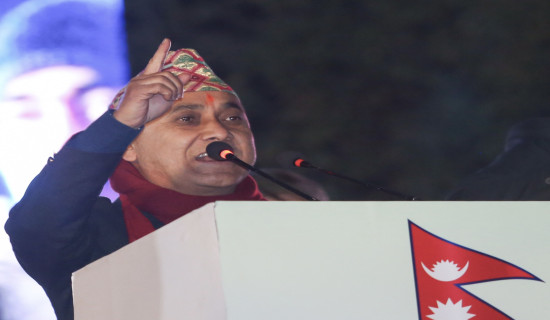- Monday, 12 January 2026
Wiping Out TB
Yes! We can end TB!" is the slogan of this year's World Tuberculosis Day. We celebrate World Tuberculosis Day on March 24, the day in 1882 when Dr. Robert Koch discovered the bacterium that causes TB, which paved the way for the diagnosis and cure of TB. Nepal also marked World TB Day to raise awareness of tuberculosis and strive to end the tuberculosis epidemic. As per the UN health agency, around 1.5 million people die of TB globally every year. TB claims about 18,000 lives in Nepal every year.
Thus, TB was one of the most feared infectious diseases in Nepal. The bacteria usually attacks the lungs but it can attack any part of the body. Tracing the whereabouts of TB patients is the major challenge in controlling the spread of the disease. Due to the lack of proper information, patients stop medication without properly completing the course, which makes them resistant to the medicines and adds challenge to their treatment.
Tuberculosis remains one of the major public health concerns of the country even 85 years after its treatment started in Nepal. Despite ongoing efforts, tuberculosis continues to distress communities across the nation, reflecting a longstanding public health concern. In response to this persisting issue, Nepal has undertaken a multi-faceted approach, emphasising active testing of individuals in contact with tuberculosis patients, specialised management for children affected by the disease, and integrated strategies to address TB-HIV co-infection.
TB is absolutely curable if the infected individuals take timely medicine. To facilitate this, the government has been providing free medicine under the direct supervision of health workers, but when patients discontinue their medicines, they develop resistance to medicine, which results in multidrug resistance to tuberculosis, or MDR-TB. Prisoners, migrants and slum dwellers in Nepal are more vulnerable to TB compared to people living in better living conditions. As most of the jails are overcrowded, the inmates have a high risk of catching TB, likewise, people living in substandard conditions have a high risk of TB infection.
Director of Nepal Tuberculosis Centre Dr. Prajwal Shrestha said that people aged 15 to 44 and senior citizens aged over 65 are more vulnerable to TB. The government is offering anti-TB medicines for free from 6000 plus health institutions. Nepal aims to eradicate TB by 2035 and completely eliminate it by 2050.
People, especially the less privileged ones in rural areas, are not getting the medical attention they deserve. There has been tendency of no seeking medical help until the disease strikes down the patients. The government still needs to run the programmes to raise awareness of the disease in the remote areas as the citizens still lack proper information regarding the disease, its modes of transmission and where to seek treatment when one catches TB. Thus awareness raising programmes along with the treatment facilities provided by the government is a must to curb the spread of this infectious disease. As the constitution has guaranteed the right to health, it is imperative on the part of state agencies to provide health facilities to the vulnerable and needy people.

















